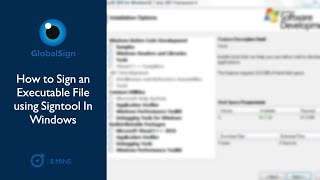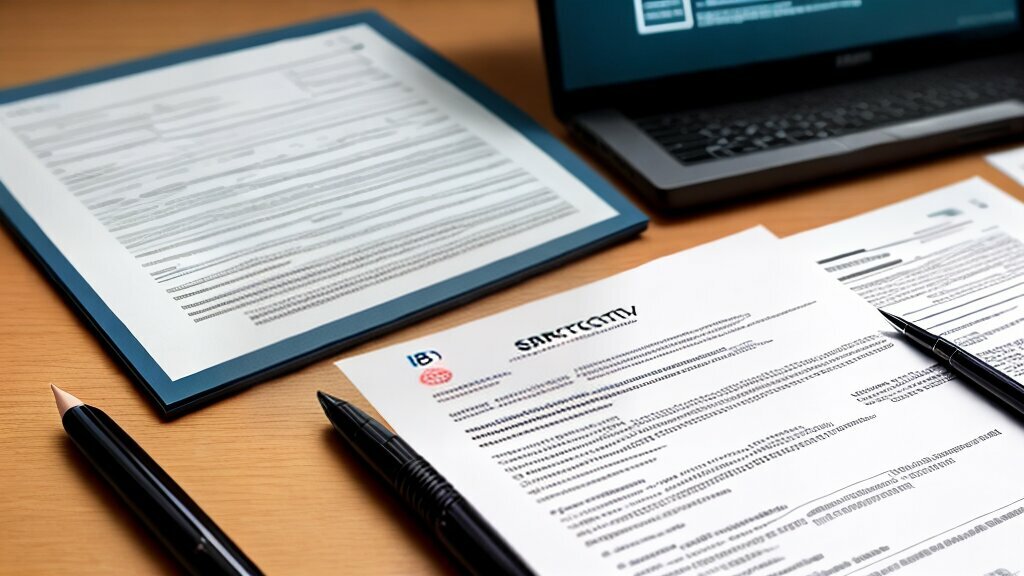Microsoft Authenticode Code Signing Certificate is a technology employed by Microsoft for code signing purposes. It serves the purpose of verifying the identity of software publishers and ensuring the integrity of their code. This certification, issued by trusted certificate authorities (CAs), allows software to be signed without raising any warnings to users, providing assurance of its authenticity and security.
The Authenticode certificate can be used to sign various types of software files, including .dll, .exe, .xpi, and .cab. By using trusted CAs, Authenticode verifies the identity of the software publisher and guarantees the integrity of the code through the use of hash functions.
Key Takeaways:
- Microsoft Authenticode Code Signing Certificate verifies the identity of software publishers.
- It ensures the integrity of code through the use of hash functions.
- Valid Authenticode certificates do not raise warnings to users.
- There are two types of Authenticode certificates available: Standard and Extended Validation (EV), with EV certificates requiring more extensive vetting.
- EV certificates provide additional benefits, including a reputation boost with the Microsoft SmartScreen filter.
The Purpose of Code Signing
Code signing involves the use of X.509 certificates to sign software codes and executable files, verifying their authenticity and ensuring their integrity. By digitally signing code, developers can provide assurance to users about the origin and integrity of the software they are running.
One of the key purposes of code signing is to use digital signatures to verify the identity of the code creator. When a code is signed with a valid code signing certificate, it provides users with confidence that the code has not been tampered with and comes from a trusted source.
Digital signatures are created using public key cryptography, which ensures that only the code creator, who possesses the private key, can sign the code. This process helps protect against unauthorized alteration or tampering of the code.
Another significant purpose of code signing is to enhance software security. When users encounter signed code, their computer’s security systems, such as antivirus programs or web browsers, can check the integrity and validity of the signature. If the signature is valid, it means that the code has not been modified since it was signed, making it less likely to be malicious.
Code signing also helps protect against cyberattacks that involve distributing fake or malicious software. By requiring a valid code signing certificate, users can trust that the software they are installing is legitimate and has not been tampered with. This helps establish a trusted software supply chain and reduces the risk of malware infections.
In summary, code signing plays a crucial role in software security by verifying the authenticity and ensuring the integrity of software codes and executable files. It enhances user trust, protects against tampering and cyberattacks, and establishes a trusted software supply chain.
Ensuring Software Authenticity
This process provides users with assurance about the legitimacy of the software they are running and protects against any alterations or tampering that may occur after the code is signed.
Software authentication is a vital component in today’s digital landscape, where cybersecurity threats are prevalent. Microsoft Authenticode Code Signing is a trusted technology that verifies the identity of software developers and ensures the integrity of the code they create.
With the use of Microsoft Code Signing Certificates, software codes and executable files are signed, giving users the confidence that the software they are downloading or running is genuine and has not been tampered with. These certificates, offered by trusted authorities like DigiCert, play a crucial role in establishing trust between software developers and end-users.
By utilizing cryptographic methods, the publisher’s identity is verified, and the code remains intact throughout the distribution process. Digital signatures are hashed with the code, creating a unique fingerprint that can detect any modifications or unauthorized changes to the software.
Timestamping signatures is a recommended practice to ensure maximum security. This allows users to validate the digital signature even if the certificate has expired. Furthermore, it is crucial to sign both the installer and the application itself to provide a comprehensive level of trust and protect against potential security vulnerabilities.
Obtaining a Microsoft Authenticode Code Signing Certificate involves a comprehensive vetting process to validate the authenticity of the developer and the software being signed. Trusted certificate authorities like DigiCert offer these certificates, and working with reputable resellers can provide better pricing options.
In conclusion, software authentication through code signing is an essential step in safeguarding against cyberattacks and protecting users from potential harm. With Microsoft Authenticode Certificates and the use of trusted certificate authorities, software developers can establish a trusted software supply chain, ensuring the integrity and authenticity of their applications.
Protecting Against Malicious Tampering
When a program has been digitally signed, any malicious tampering with the code and subsequent redistribution online will trigger a warning to users before they execute the program. This is crucial in the digital world to ensure the integrity and authenticity of software code.
Microsoft Authenticode Code Signing Certificates play a vital role in protecting against malicious tampering. These certificates provide users with assurance about the creator of the code and verify that it has not been tampered with. By digitally signing their code, developers can establish trust and ensure that their software has not been altered or tampered with by unauthorized individuals.
Without a valid code signing certificate, fake software can be distributed, carrying malware and exposing users to potential cyberattacks. It is important for developers to acquire a valid code signing certificate to protect their users and maintain the integrity of their code.
Code signing relies on public key cryptography and digital certificates to establish trust. When a developer signs their code, they use their private key to create a unique digital signature. This signature is then verified using the developer’s public key, which is included within the digital certificate. This process ensures that the code has not been altered or tampered with since it was signed.
Authenticode technology, used by Microsoft, uses cryptographic methods to verify the identity of the software publisher and ensure code integrity. The process involves validating the publisher’s information and creating a hash function that detects alterations to the code. If any changes are made to the signed code, the hash value will change, indicating that the code has been tampered with.
By obtaining a Microsoft Authenticode Code Signing Certificate, developers can protect themselves from fake software and potential cyberattacks. These certificates provide users with assurance that the code they are running is authentic and has not been tampered with. Users can have confidence that the software they are using is from a trusted source.
The Technology Behind Code Signing
Code signing is based on well-established technology, including Public Key Cryptography and digital certificates. These technologies work together to provide users with assurance about the legitimacy and integrity of the code they download or run on the internet.
Public Key Cryptography uses a pair of mathematically related keys: a private key and a public key. The private key is kept secure by the code creator and is used to create a digital signature for the code. This digital signature, along with a unique hash function, ensures that the code has not been tampered with.
Digital certificates, issued by trusted Certificate Authorities (CAs) like DigiCert, verify the identity of the code creator and provide a trusted link between the digital signature and the code. These certificates contain information such as the code creator’s name and the expiration date of the certificate.
When a user’s system encounters signed code, it checks the digital signature and hash value against the code signing certificate. If the verification is successful, the user can be confident that the code has not been altered since it was signed. This process protects users from downloading and running fake or tampered software.
Microsoft Authenticode Code Signing Certificates, obtained from trusted CAs like DigiCert, play a crucial role in establishing trust in the software supply chain. By verifying the identity of the software publisher and assuring code integrity, Authenticode technology helps users make informed decisions about the software they choose to install.

Simplifying the Code Signing Process
DigiCert, a trusted certificate authority, offers tools to simplify the process of obtaining and installing code signing certificates. Simplifying the code signing process is crucial for ensuring the authenticity and security of software. Microsoft Authenticode Code Signing Certificates provide assurance to users about the origin of the code and its integrity. This process relies on Public Key Cryptography and digital certificates.
When obtaining a code signing certificate, it is important to go through the proper vetting process to ensure the certificate’s validity. DigiCert provides code signing certificates that can be purchased through reputable resellers at a lower price, making the process more accessible to developers.
Signing the code using tools like SignTool.exe is an essential step in the code signing process. By signing the code, it helps prevent tampering and ensures that security tools can readily identify the code as trusted. This is especially important when distributing software, as it provides users with the confidence that the software has not been altered or tampered with.
To further enhance security, it is recommended to timestamp signatures and sign both the installer and the application. Timestamping signatures helps establish a trusted timeline and prevents issues with expired certificates. Signing both the installer and the application ensures that users can trust not only the software itself but also the installation process.
Authenticode technology plays a vital role in the code signing process. It verifies the identity of the software publisher and ensures code integrity by using cryptographic methods. This helps establish trust between developers and users, as the authenticity and integrity of the code can be verified.
The validation process for obtaining a Microsoft Authenticode Code Signing Certificate involves thorough checks to verify business details and additional identification requirements for individual developers. This rigorous process ensures that only legitimate and trustworthy developers are granted code signing certificates.
Microsoft offers both Standard and Extended Validation (EV) certificates for code signing. EV certificates provide additional security features and also offer a reputation boost with the Microsoft SmartScreen Filter. By using an EV certificate, developers can enhance their software’s reputation and increase user confidence.
In conclusion, simplifying the code signing process is essential for protecting against cyberattacks and ensuring that users can trust the software they install. Microsoft Authenticode Code Signing Certificates, when obtained through trusted certificate authorities like DigiCert, provide a secure and reliable way to authenticate software. By following best practices and using the right tools, developers can establish a trusted software supply chain and enhance software security.
Signing Code in Microsoft Applications
To sign code in Microsoft applications, the process is relatively straightforward once you have properly configured your Microsoft code signing certificate. Code signing is an essential step for ensuring the authenticity and integrity of software, allowing users to verify the source and integrity of the code they are running. By signing your code with a Microsoft Authenticode Code Signing Certificate, you can provide users with assurance that the software they are installing or running is legitimate and has not been tampered with.
Before signing your code, you need to ensure that you have obtained a valid code signing certificate from a trusted certificate authority, such as DigiCert or Certum. Once you have obtained the certificate, you can start signing your code using the Digital Signature Wizard Signtool, which is built into the Windows operating system.
To sign your code using the Digital Signature Wizard Signtool, follow these steps:
- Open the command prompt and navigate to the location of the code you want to sign.
- Run the following command:
signtool sign /SHA1 [Thumbprint] /tr [time server] /td sha256 /fd sha256 [file]
Replace [Thumbprint] with the SHA1 thumbprint of your certificate, [timeserver] with URL of your CA’s time server, and [file] with the name of the file you want to sign.
For example, if the SHA1 thumbprint of your certificate is “A1B2C3”, you are using a certificate from certum and the file you want to sign is called myapp.exe, the command would be:
signtool sign /sha1 "A1B2C3" /tr http://time.certum.pl /td sha256 /fd sha256 myapp.exe
NOTE: The SHA1 thumbprint has 40 characters and has been shortened for this example for better readability.
This command will apply a digital signature to the specified file using your code signing certificate, ensuring that users can verify the authenticity and integrity of the code.
It’s important to note that you should sign both the installer and the application itself for better security and recognition by security tools. Additionally, it is recommended to timestamp every signature to ensure long-term trust, as timestamps provide evidence that the code was signed at a specific time.
By following these steps and signing your code with a Microsoft code signing certificate, you can protect against cyberattacks and gain user trust in your Microsoft applications. Code signing is an essential practice for software developers, allowing you to establish a trusted software supply chain and enhance the integrity of your software.

Types of Microsoft Authenticode Certificates
There are different types of Microsoft Authenticode Code Signing Certificates, including Standard Code Signing Certificates and Extended Validation (EV) Code Signing Certificates. These certificates play a crucial role in software security, providing assurance about the authenticity and integrity of code.
Standard Code Signing Certificates are designed for developers who require a code signing certificate with a lighter vetting process. These certificates are suitable for most software development needs and offer the fundamental benefits of code signing. By signing their software with a Standard Code Signing Certificate, developers can establish trust and ensure that their software hasn’t been tampered with or altered.
On the other hand, Extended Validation (EV) Code Signing Certificates require a more extensive vetting process. These certificates offer additional security features and come with the benefit of reputation boost. When software is signed using an EV Code Signing Certificate, users have even greater assurance about its authenticity and integrity.
EV Code Signing Certificates provide visual indicators, such as a green address bar, in supported platforms, which indicates to users that the software has been digitally signed with an EV certificate. This visual indicator enhances the user’s confidence in the software’s legitimacy and helps establish a trusted software supply chain.
It’s important to note that obtaining a Code Signing Certificate involves going through a vetting process by a trusted certificate authority (CA). While CAs offer Code Signing Certificates directly, there are also reputable resellers that provide these certificates at competitive prices. Choosing a trusted reseller can often result in cost savings without compromising on security.
By signing their code with a Microsoft Authenticode Certificate, developers can ensure the integrity of their software and protect users from potential risks associated with fake or tampered software. Code signing uses cryptographic methods to verify the identity of the publisher and ensure that the code has not been modified or tampered with.
Authenticode certificates support the SHA-2 algorithm, which is a widely recognized and trusted algorithm for generating digital signatures. They also enable timestamping, which is important for ensuring that signatures remain valid even after the associated certificate has expired.
When signing code, developers commonly use the SignTool.exe program provided by Microsoft. It allows them to sign both the installer and the application itself, ensuring that all components are protected and recognized as legitimate by operating systems and security software.
In the world of cybersecurity, code signing certificates play a crucial role in establishing trust and ensuring the integrity of software. By using Microsoft Authenticode Code Signing Certificates, software developers can protect users from potentially harmful or tampered software, as fake software often lacks a valid signature and may carry malware. With the assurance provided by code signing, developers can establish a trusted software supply chain and enhance software integrity.
Enhanced Security with EV Certificates
While the standard version of Microsoft Authenticode Code Signing Certificate offers a reliable level of security, the Extended Validation (EV) certificate takes it a step further. EV certificates provide enhanced security features that make them an excellent choice for code signing.
One of the significant benefits of EV code signing certificates is the reputation boost it offers with Microsoft’s SmartScreen filter. The SmartScreen filter is a security feature built into Windows that helps protect users from malicious software. When an application is signed with an EV certificate, it is more likely to pass the SmartScreen filter, giving users confidence in the software’s legitimacy and reducing the likelihood of security warnings.
In addition to the reputation boost, EV certificates provide enhanced security through the use of a private key stored on an external hardware token. This added physical security measure ensures that the private key used to sign the code remains secure and cannot be compromised by digital attacks.
EV certificates require a more extensive vetting process compared to standard certificates. This rigorous vetting process includes verifying the identity and legitimacy of the developer, ensuring a higher level of trust and security for users.
By utilizing EV code signing certificates, developers can protect their software and end-users from cyberattacks and establish a trusted software supply chain. The combination of digital signatures, hash functions, reputation boosts, and secure private key storage helps to ensure the integrity and authenticity of the code.
The Importance of Code Signing for Developers
It is important to note that code signing is no longer an option but rather a requirement for software developers. Code signing plays a crucial role in establishing a trusted software supply chain, ensuring software integrity, and providing users with confidence in the software they are installing.
One of the key benefits of code signing is that it helps establish a trusted software supply chain. By signing their code with a trusted certificate authority, developers can verify their identity, allowing users to confidently install and run their software. This is especially important for code that is downloaded or run on the internet, where users are more susceptible to malicious attacks.
Software integrity is another critical aspect addressed by code signing. When software is signed with a code signing certificate, it creates a digital signature that can be used to verify the integrity of the code. Users can be assured that the software has not been tampered with or altered since it was signed. This helps protect against cyberattacks and ensures a safe user experience.
Microsoft Authenticode Code Signing Certificates, in particular, offer a high level of assurance and trust. They use cryptographic methods to verify the identity of the software publisher and ensure code integrity. By linking digital signatures with trusted certificate authorities like DigiCert and Certum, Microsoft Authenticode Certificates provide users with confidence in the legitimacy of the software they are running.
There are two types of Microsoft Authenticode Certificates available: the Standard Code Signing Certificate and the Extended Validation (EV) Code Signing Certificate. The EV certificate requires a more comprehensive vetting process and offers additional benefits. The EV certificate provides a reputation boost backed by the Microsoft SmartScreen filter, further enhancing user trust and confidence in the software.
In conclusion, code signing is not only a best practice but a requirement for software developers. It establishes a trusted software supply chain, ensures software integrity, and builds user confidence. By obtaining a Microsoft Authenticode Code Signing Certificate, developers can protect their software and provide users with the assurance they need to trust the software they install.
Obtaining a Code Signing Certificate
In terms of obtaining a Microsoft Authenticode Code Signing Certificate, it is essential to go through a trusted certificate authority. DigiCert and Certum are reputable certificate authorities (CAs) that offer Code Signing Certificates for purchase. These certificates are used by software developers to sign their code, ensuring its authenticity and integrity.
Code Signing Certificates can be used to sign various types of software and files, including .dll and .exe files. By signing their code, developers provide users with assurance that the software they are running has not been tampered with or altered since it was signed.
Authenticode technology uses cryptographic methods to verify the identity of the software publisher and ensure the integrity of the code. The identity of the publisher is validated by trusted CAs, who undergo a thorough process to check and verify the details provided by the publisher.
During the validation process, the publisher’s information is verified for accuracy and legitimacy. This includes checking business details and additional identification requirements for individual developers. By working with a trusted CA, software developers can establish trust in their code and assure users of its authenticity.
Once the code signing certificate is obtained and the code is signed, the digital signature is hashed together with the code. This creates a unique hash value that allows any alterations or tampering with the code to be detected. If the code has been tampered with, it will trigger a warning when the software is executed, alerting the user to potential security risks.
There are two types of Code Signing Certificates: Standard Code Signing and Extended Validation (EV) Code Signing. The EV certificate requires a more comprehensive vetting process, including additional validation steps, to verify the identity and legitimacy of the publisher. While both types of certificates provide assurance of code integrity, the EV certificate offers additional benefits, such as an improved reputation with the Microsoft SmartScreen filter.
To obtain a Code Signing Certificate, software developers must go through the vetting process by a trusted CA. It is recommended to work with a certificate reseller, such as DigiCert or Certum, to obtain the certificate at a better price. Resellers simplify the process and provide support throughout the application process.
It is important for developers to follow best practices when signing code with a Code Signing Certificate. This includes timestamping every signature, which ensures that the signature remains valid even after the certificate expires. It is also recommended to sign both the installer and the application itself to establish trust and ensure the validity of the code.
Overall, obtaining a Code Signing Certificate from a trusted certificate authority is crucial for software developers to ensure the authenticity and integrity of their code. By signing their code, developers establish trust with users and contribute to a secure software ecosystem.

Validation Process for Code Signing Certificates
Certificate authorities require a vetting process before issuing a code signing certificate to ensure the legitimacy of the applicant or organization. This validation process plays a crucial role in maintaining the security and integrity of software.
During the validation process, the certificate authority verifies the identity of the software publisher and ensures that they have the authority to sign code on behalf of the organization. This is done to prevent unauthorized individuals or malicious actors from obtaining a code signing certificate.
The validation process typically involves a thorough review of the applicant’s business details, such as company name, address, and contact information. The certificate authority may also require additional documentation to confirm the applicant’s identity, such as government-issued identification or legal documents.
For individual developers, the validation process may be slightly different. In addition to verifying business details, the certificate authority may require additional identification requirements, such as a notarized affidavit or proof of domain ownership.
Once the applicant’s identity and authority have been verified, the certificate authority issues the code signing certificate. This certificate contains a digital signature that can be used to verify the authenticity and integrity of the software.
It is important to note that the validation process may vary slightly depending on the certificate authority and the type of certificate being issued. Standard code signing certificates typically require a less extensive validation process compared to extended validation (EV) code signing certificates.
EV code signing certificates require a more rigorous validation process, including additional checks to establish the applicant’s identity and authority. This increased level of validation provides enhanced security and trust, offering benefits such as reputation boost and improved software integrity.
Once the code signing certificate has been obtained, it is recommended to sign both the installer and the application itself. This ensures that the software remains protected against tampering and alteration throughout its lifecycle.
Additionally, it is essential to timestamp every signature applied to the software. Timestamping adds an additional layer of security by providing proof that the signature was valid at the time of signing, even if the certificate has expired or been revoked.
Ensuring Publisher Identity and Code Integrity
Besides verifying the identity of the publisher, Authenticode technology also ensures code integrity. This is crucial in today’s digital landscape where software security is a top priority. By using Microsoft Authenticode Code Signing Certificates, software publishers can establish trust and safeguard users from potential cybersecurity threats.
Microsoft Authenticode Code Signing Certificates allow users to verify the identity of the code creator and ensure that the code has not been tampered with. This is achieved through the use of digital signatures and unique hash functions. Digital signatures provide a way to verify that the code comes from a trusted source, while hash functions create a unique value for the code based on its content. If the code is tampered with in any way, the hash value will change, indicating that the code is no longer trustworthy.
To obtain a Microsoft Authenticode Code Signing Certificate, software publishers need to go through a validation process conducted by trusted certificate authorities. During this process, the certificate authority verifies the identity of the software publisher by checking and validating details such as the business name, registration information, and address. This ensures that only legitimate publishers can obtain code signing certificates, enhancing overall security in the software ecosystem.
Once a code signing certificate is obtained, software publishers can sign various types of software files, including .dll, .exe, .xpi, and .cab files. Signing software with a valid code signing certificate provides users with assurance of its legitimacy and security. When users download signed software, their operating systems or web browsers will check the digital signature and verify that it matches the publisher’s information stored in the certificate. If any tampering or alteration is detected, the system will display a warning, alerting the user to potential security risks.
By using Microsoft Authenticode Code Signing Certificates, software publishers can establish trust and credibility with users. This is especially important in an age where cyberattacks and malware infections are prevalent. When users see that a software file is signed with a valid code signing certificate, they can feel confident that the publisher’s identity has been verified and that the code has not been tampered with. This helps create a secure software environment and protects users from downloading malicious or compromised software.
Overall, ensuring publisher identity and code integrity is essential for maintaining a trusted software supply chain. Microsoft Authenticode Code Signing Certificates provide a reliable solution for software publishers, allowing them to establish trust and protect users from potential cybersecurity threats. By utilizing proven technology, such as public key cryptography and digital certificates, publishers can sign their software files and guarantee their authenticity, enhancing overall software security.

Warning Against Tampered Software
In an era where cyberattacks are on the rise, it is crucial to be aware of the dangers posed by tampered software. Code signing with an Authenticode certificate is an effective way to prevent users from running maliciously altered or tampered software. Authenticode is a technology used by Microsoft for code signing, providing assurance about the legitimacy of software and verifying its integrity.
Authenticode code signing certificates rely on tested and proven technology, using Public Key Cryptography and digital certificates. By digitally signing code with a certificate, a developer’s identity is authenticated, and the code’s integrity is ensured through a hash function. Any alteration to the code will result in an altered hash function, subsequently changing the digital signature.
When a user receives the software, their system verifies the signature by repeating the hash value created during signing and using the public key to confirm the signature’s validity. If an alteration is detected, a warning is presented to the user. This powerful security measure ensures that users are alerted to potential threats and can make informed decisions about the software they choose to install.
Obtaining a Microsoft Authenticode Code Signing Certificate requires validation from a Certificate Authority (CA). There are two types of certificates available: Standard Code Signing and Extended Validation (EV) Code Signing. The EV certificate undergoes more extensive vetting and provides additional benefits, such as a reputation boost with Microsoft SmartScreen filter and enhanced security with a hardware token.
To make Authenticode signatures, developers can use tools like SignTool.exe provided by the software development kit. Best practices include timestamping every signature to ensure their validity in perpetuity and signing both the installer and the main executable of the application.
By educating users about the importance of code signing and encouraging them to only install software with valid signatures, the risk of running tampered software can be significantly reduced. Code signing serves as a defense against cyberattacks, protects user systems from potential harm, and helps distinguish legitimate software from malicious ones.
Conclusion
In conclusion, Microsoft Authenticode Code Signing Certificate plays a crucial role in verifying the authenticity of software and ensuring its integrity. By digitally signing their code with a trusted certificate, software developers can provide users with the assurance that the code has not been tampered with and comes from a legitimate source. Code signing relies on proven technology, such as Public Key Cryptography and digital certificates, to establish a trusted software supply chain.
Implementing code signing using tools like DigiCert’s code signing certificates simplifies the process for developers, allowing them to secure their software and distribute it securely. Obtaining a code signing certificate requires vetting by a trusted Certificate Authority, ensuring that the developer’s identity and business details are validated.
There are two types of Microsoft Authenticode Code Signing Certificates available: Standard Code Signing and Extended Validation (EV) Code Signing. While both provide the necessary security for code integrity, EV certificates offer additional benefits. With an EV certificate, software developers can enjoy a reputation boost, as their software is less likely to trigger warnings from Microsoft’s SmartScreen filter.
Code signing is a best practice for software developers in protecting against cyberattacks and ensuring the trustworthiness of software. By signing their code, developers can provide users with the confidence that their software is authentic, reducing the risk of malware infections and enhancing the overall security of the software ecosystem.

By emphasizing software integrity and establishing a trusted software supply chain, code signing certificates enable software developers to build and maintain trust with their users. In a digital landscape where security is paramount, utilizing code signing certificates is essential for protecting sensitive data and preventing unauthorized tampering.
In conclusion, Microsoft Authenticode Code Signing Certificate is a vital tool for software developers in safeguarding their code, validating its authenticity, and establishing trust with users. Incorporating code signing practices in software development ensures a secure and reliable experience for users while minimizing the risk of malicious tampering. Trust is the foundation of any successful software ecosystem, and code signing certificates play a pivotal role in maintaining that trust.
References
Listed below are the references used in this article:
- Microsoft. (2023). Authenticode. Retrieved from https://learn.microsoft.com/en-us/windows-hardware/drivers/install/authenticode
- DigiCert. (2023). Code Signing Certificates. Retrieved from https://www.digicert.com/code-signing/
FAQ
Q: What is Microsoft Authenticode Code Signing Certificate?
A: Microsoft Authenticode Code Signing Certificate is a technology employed by Microsoft for code signing purposes. It involves the use of X.509 certificates to sign software codes and executable files, verifying their authenticity and ensuring their integrity.
Q: What is the purpose of code signing?
A: Code signing is used to verify the authenticity of software and ensure its integrity. It involves the use of digital signatures to provide users with confidence about the origins of the code they are running and protect against tampering or alterations.
Q: How does Microsoft Authenticode Code Signing Certificate ensure software authenticity?
A: Microsoft Authenticode Code Signing Certificate provides users with assurance about the legitimacy of the software they are running. It verifies the identity of the publisher and protects against alterations or tampering that may occur after the code is signed.
Q: How does code signing protect against malicious tampering?
A: When code is digitally signed, any malicious tampering with the code and subsequent redistribution online will trigger a warning to users before they execute the program, preventing the installation of potentially harmful or malicious software.
Q: What technology is behind code signing?
A: Code signing is based on well-established technology, including Public Key Cryptography and digital certificates. DigiCert, a trusted certificate authority, offers tools to simplify the process of obtaining and installing code signing certificates.
Q: How can I sign code in Microsoft applications?
A: To sign code in Microsoft applications, you can use the Digital Signature Wizard Signtool graphical interface or the Microsoft command line. The command line can also be used for signing drivers using the Windows Driver Kit (WDK) with Signtool.
Q: What types of Microsoft Authenticode Certificates are available?
A: There are different types of Microsoft Authenticode Code Signing Certificates, including Standard Code Signing Certificates and Extended Validation (EV) Code Signing Certificates. The EV certificate offers enhanced security through the use of a private key stored on an external hardware token.
Q: Why is code signing important for developers?
A: Code signing is no longer an option but rather a requirement for software developers. It enhances the integrity and trustworthiness of their software, prevents tampering with code, and allows security tools to more readily identify legitimate code.
Q: How can I obtain a Code Signing Certificate?
A: To obtain a Code Signing Certificate, you need to go through a trusted certificate authority. While there is no free variant available, working with a reputable certificate reseller can provide better pricing options.
Q: What is the validation process for Code Signing Certificates?
A: The validation process for Code Signing Certificates involves the certificate authority verifying various aspects such as business name, registration details, address, and telephone number. Individual developers may need to provide additional identification validation.
Q: How does Authenticode technology ensure publisher identity and code integrity?
A: Authenticode technology ensures the identity of the publisher by validating business details. It also ensures code integrity by hashing the digital signature of the publisher with the code, creating a unique hash function.
Q: What happens if software has been tampered with?
A: If users try to install tampered software, their browser or PC will show a warning indicating that the executable file has been tampered with, preventing the installation of potentially harmful software.






